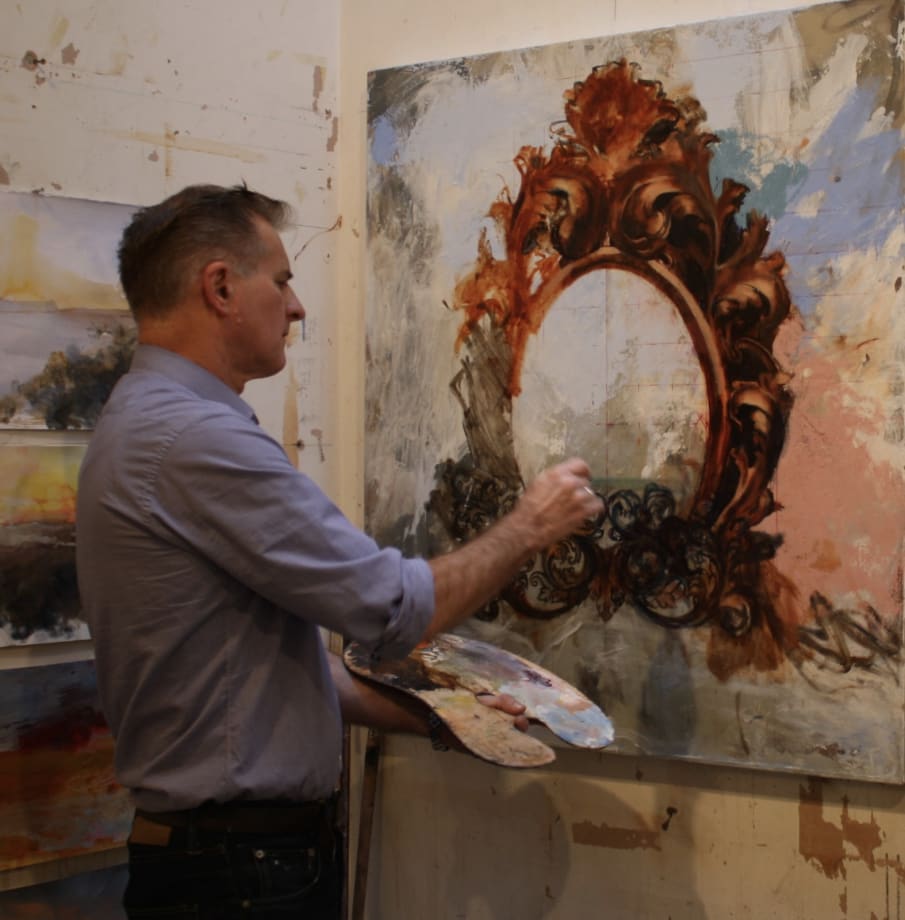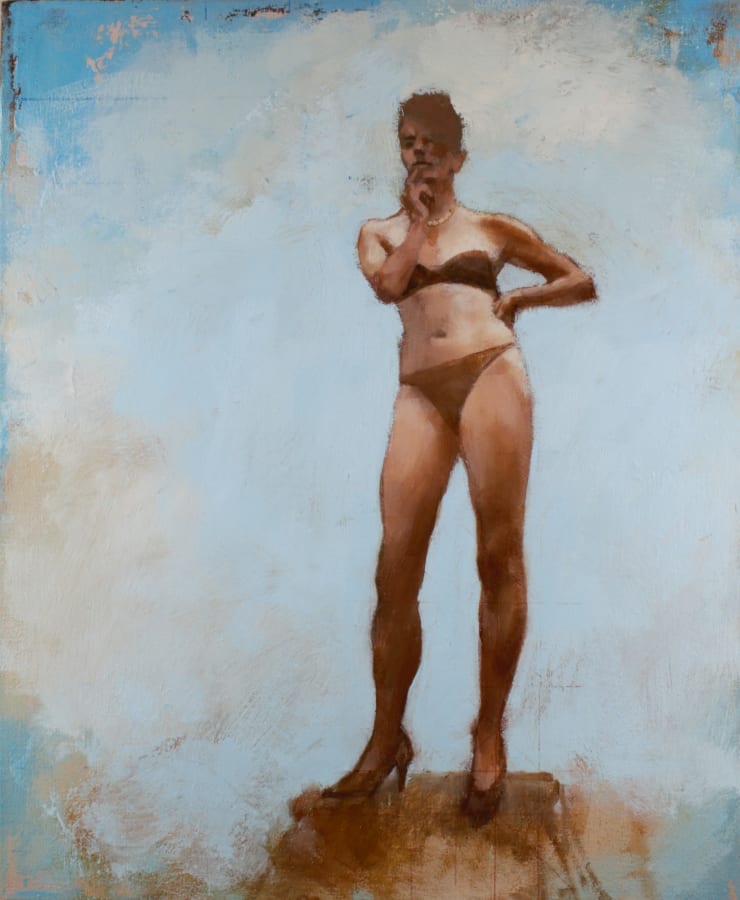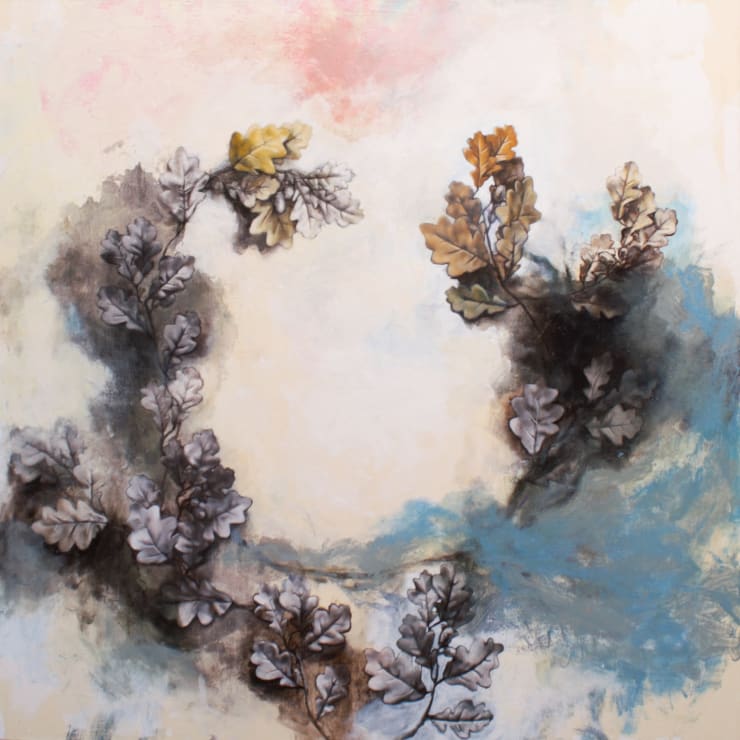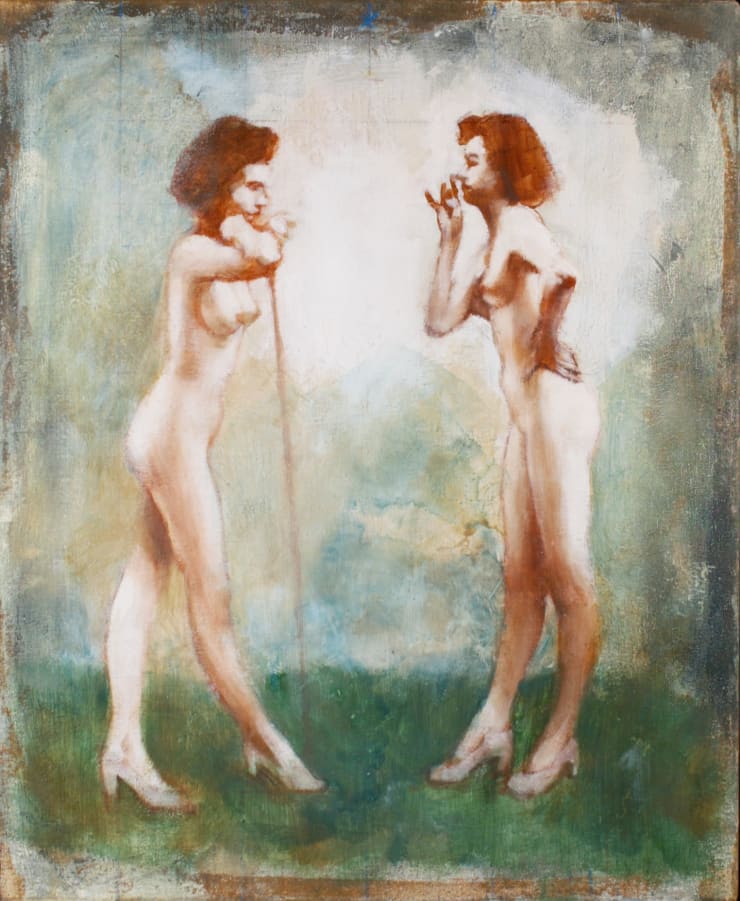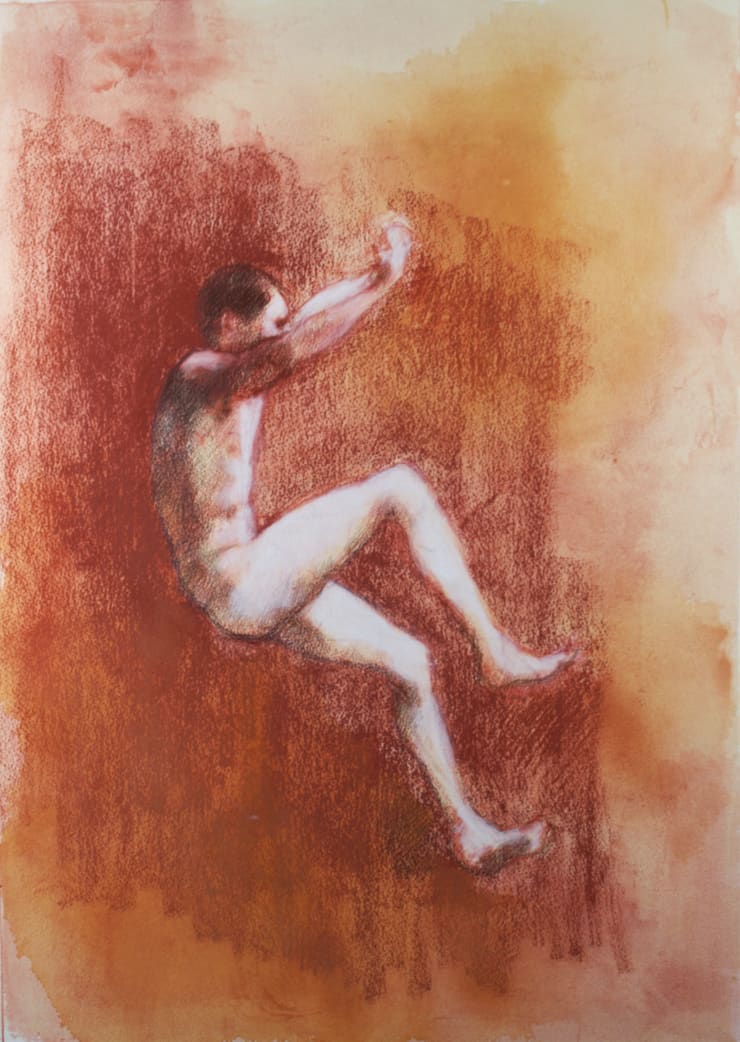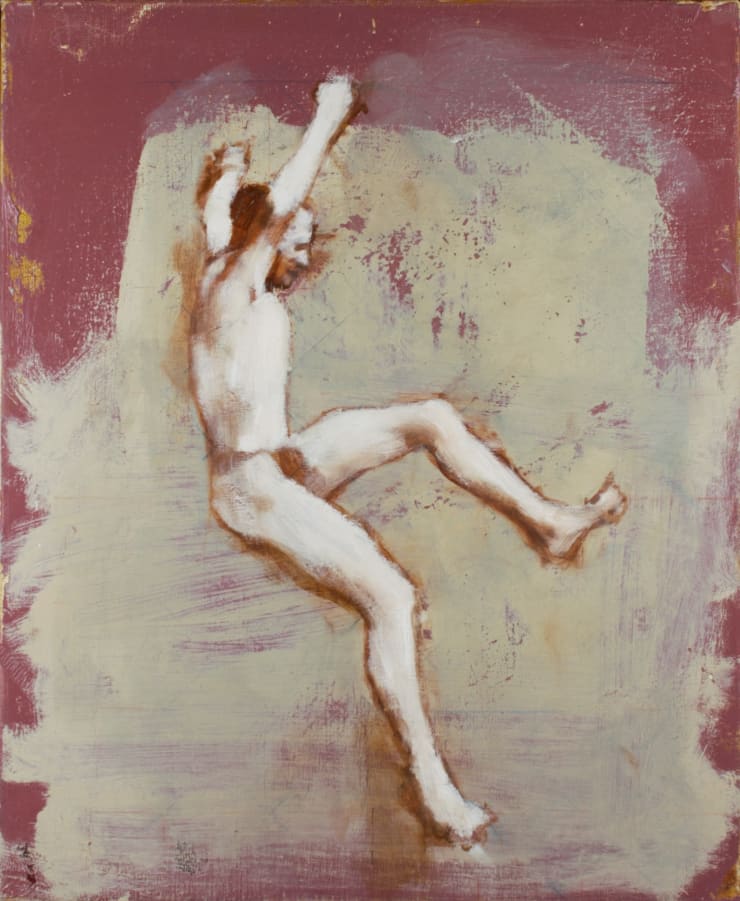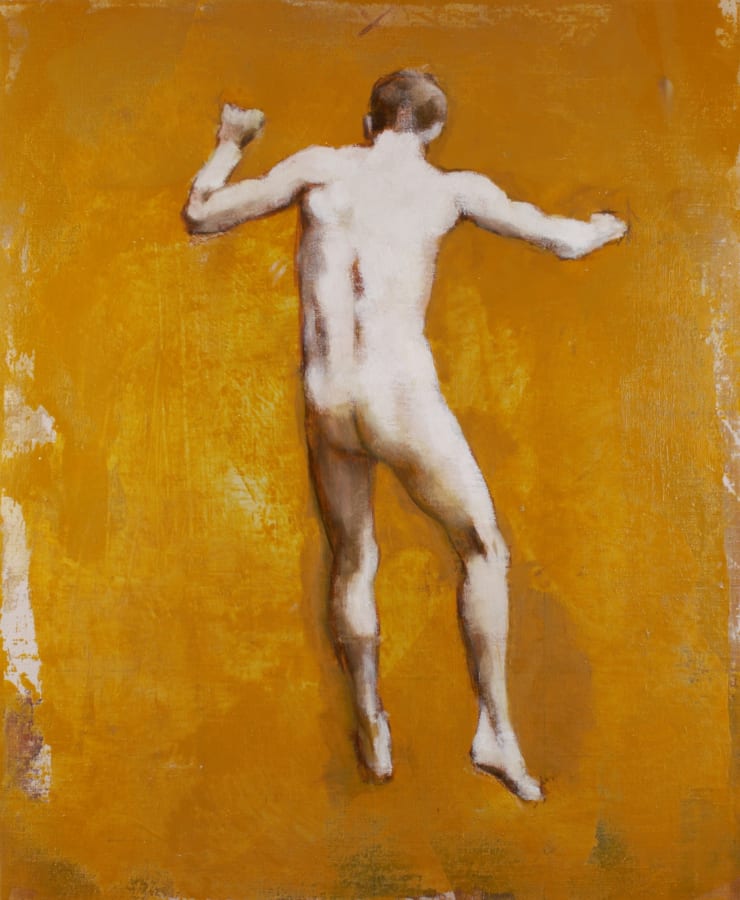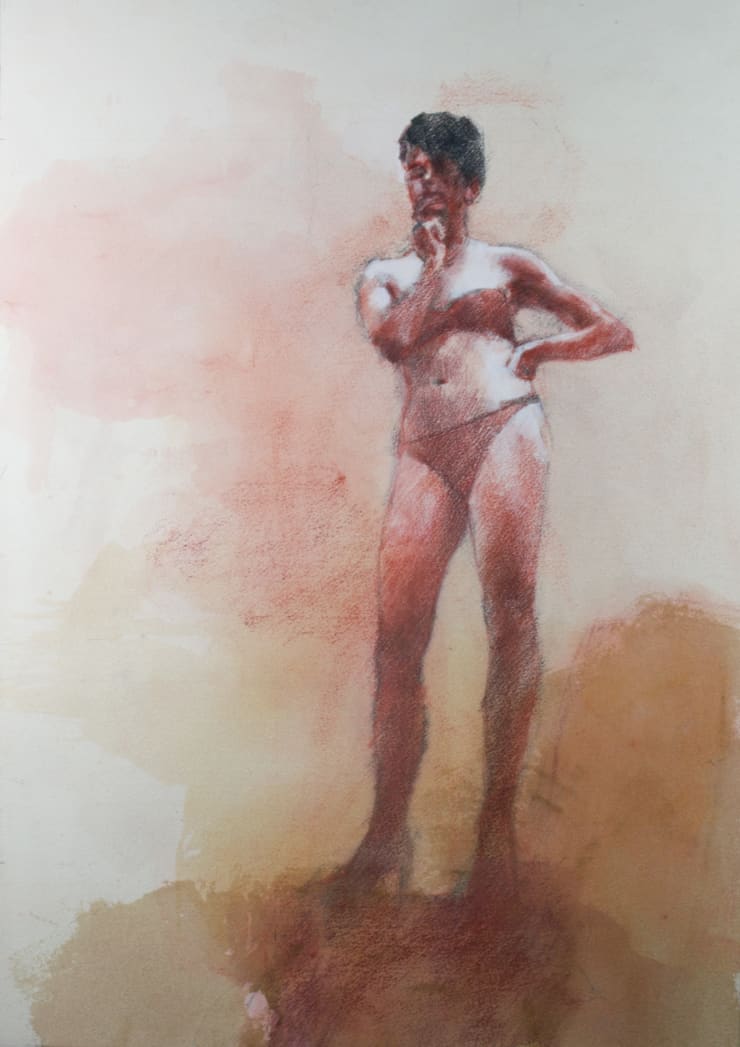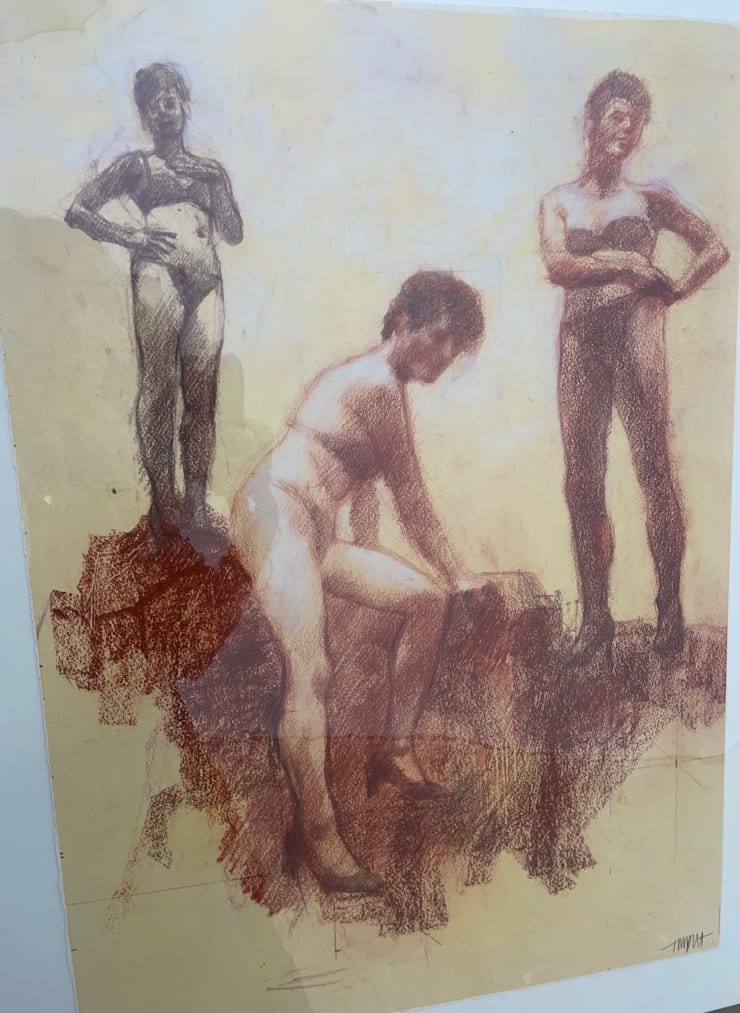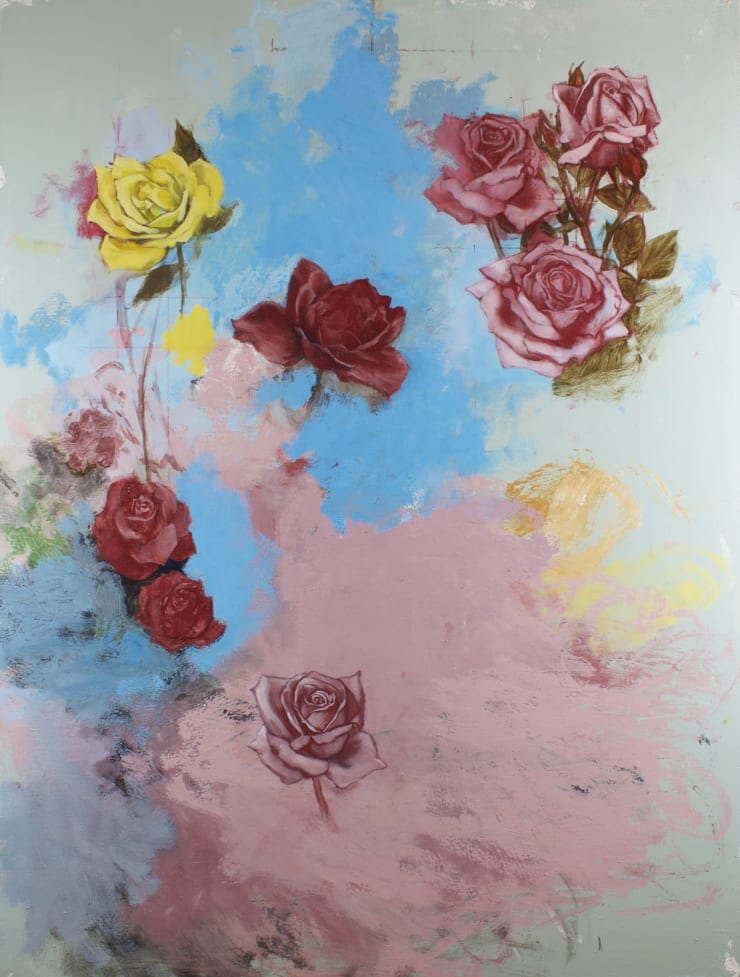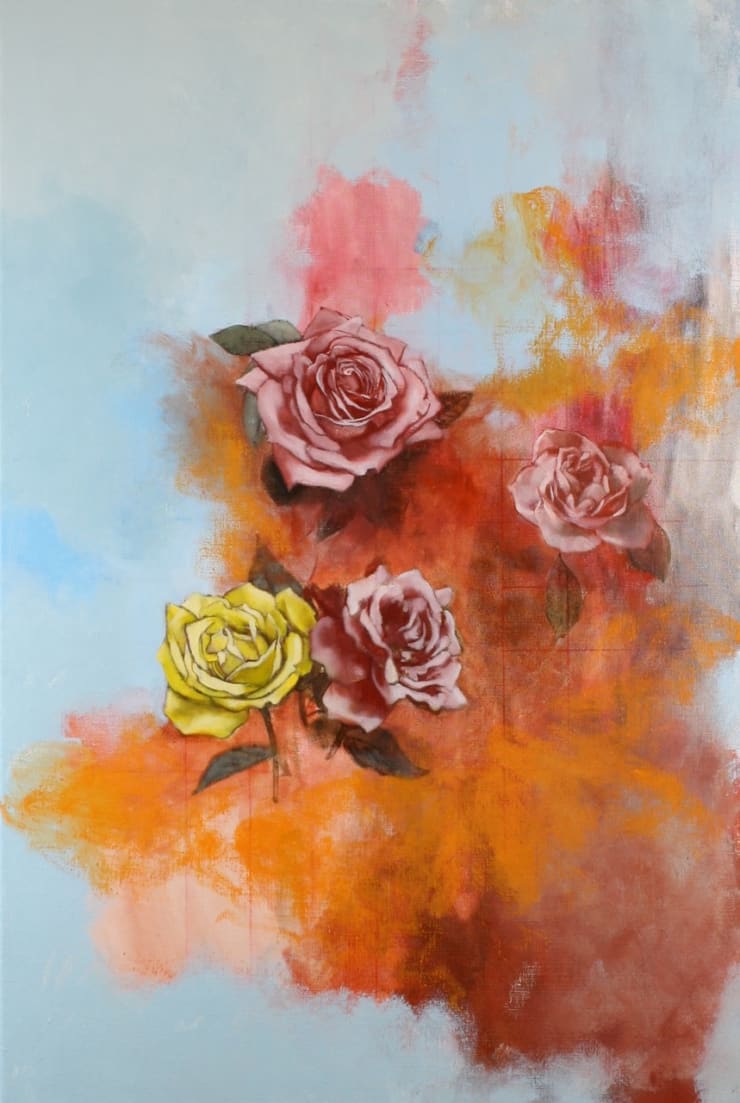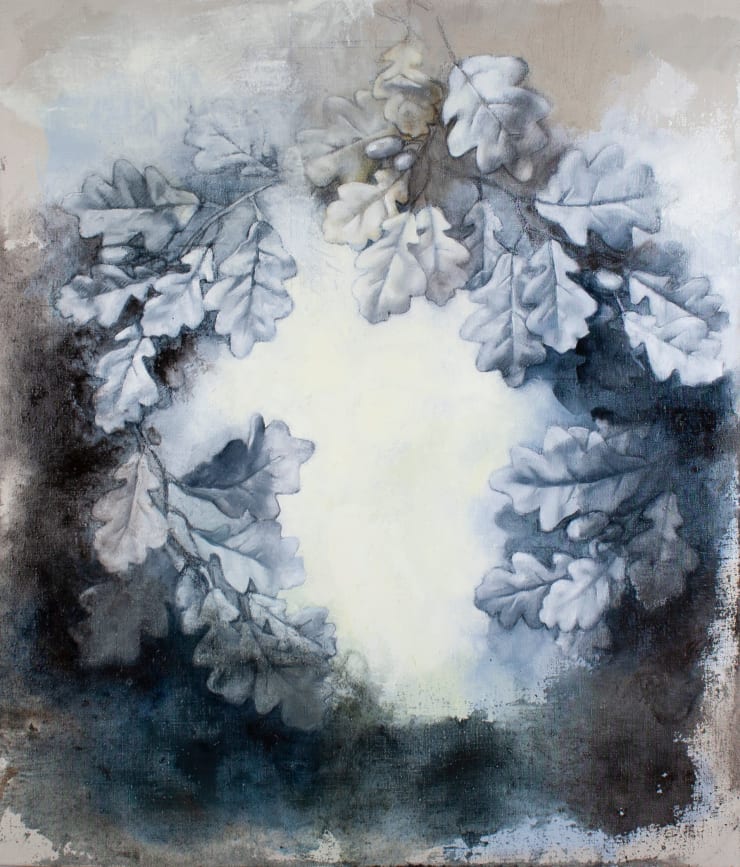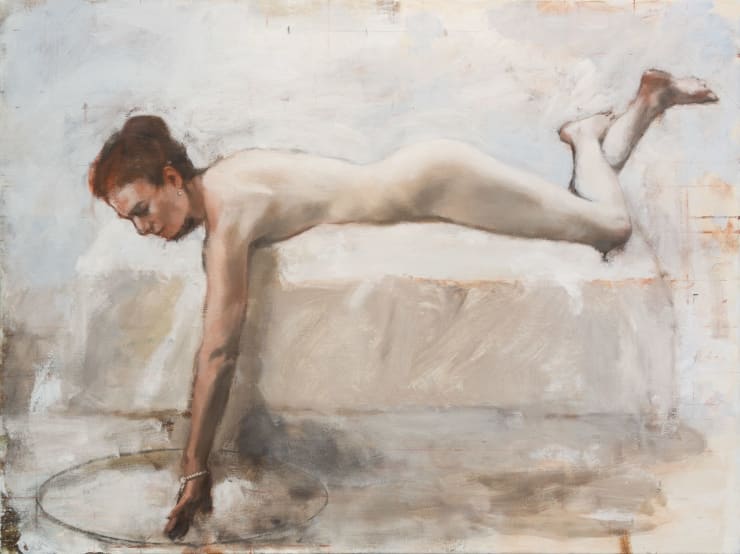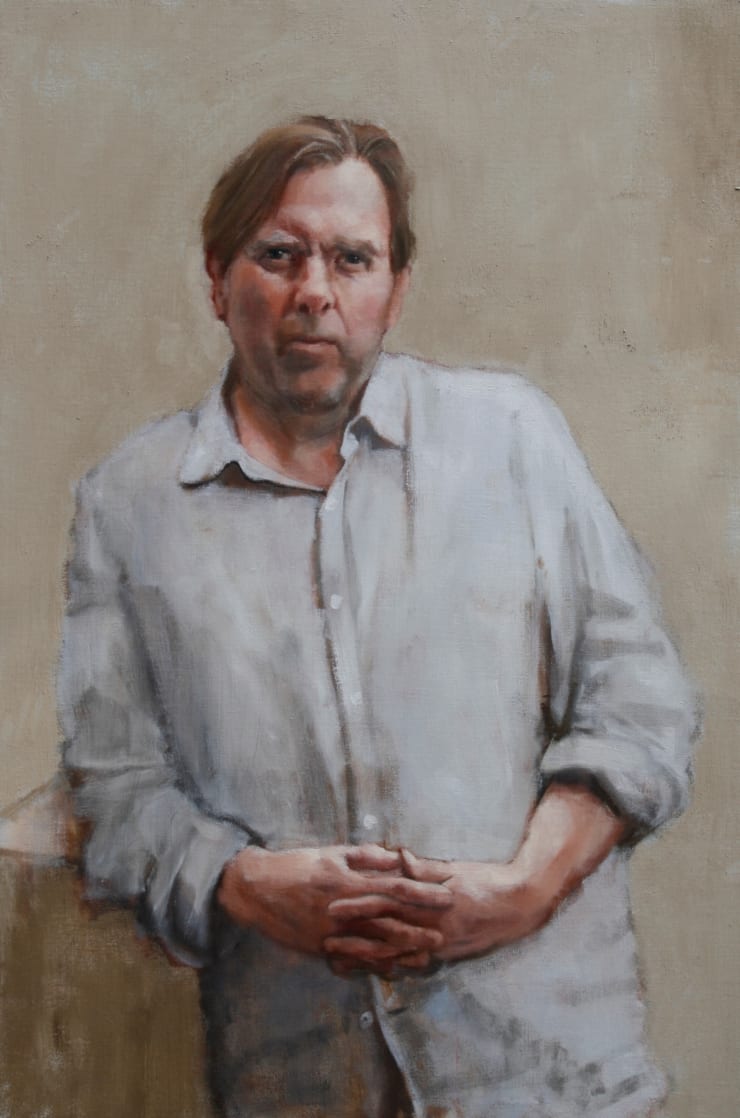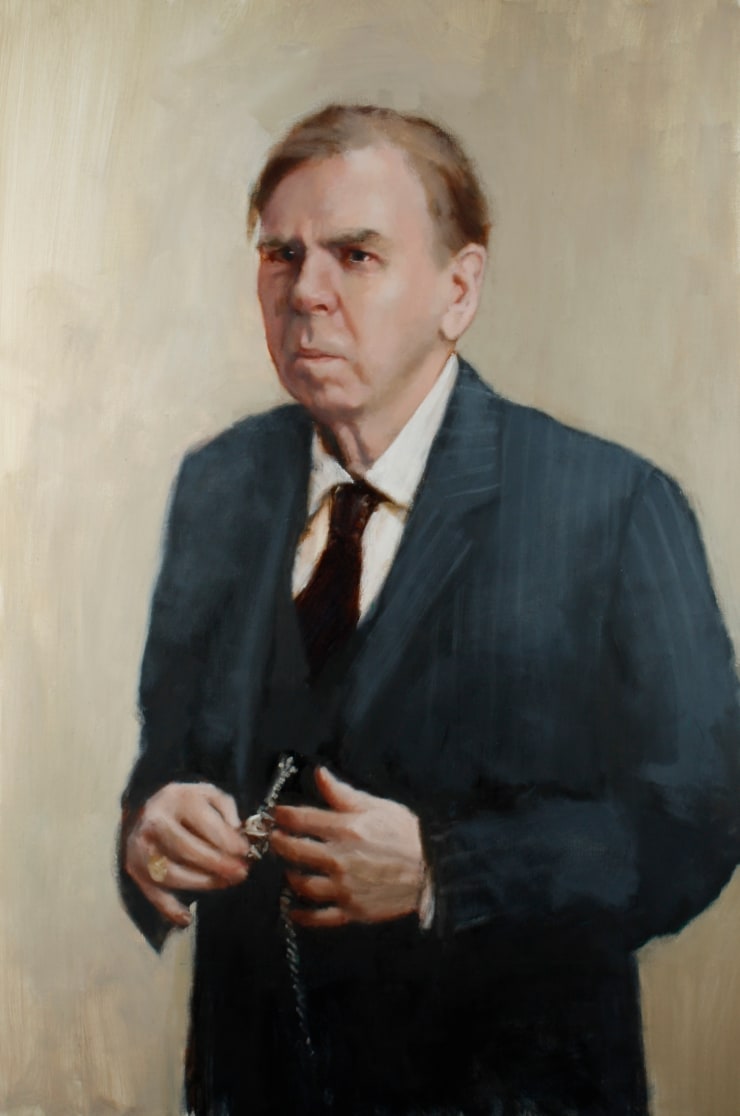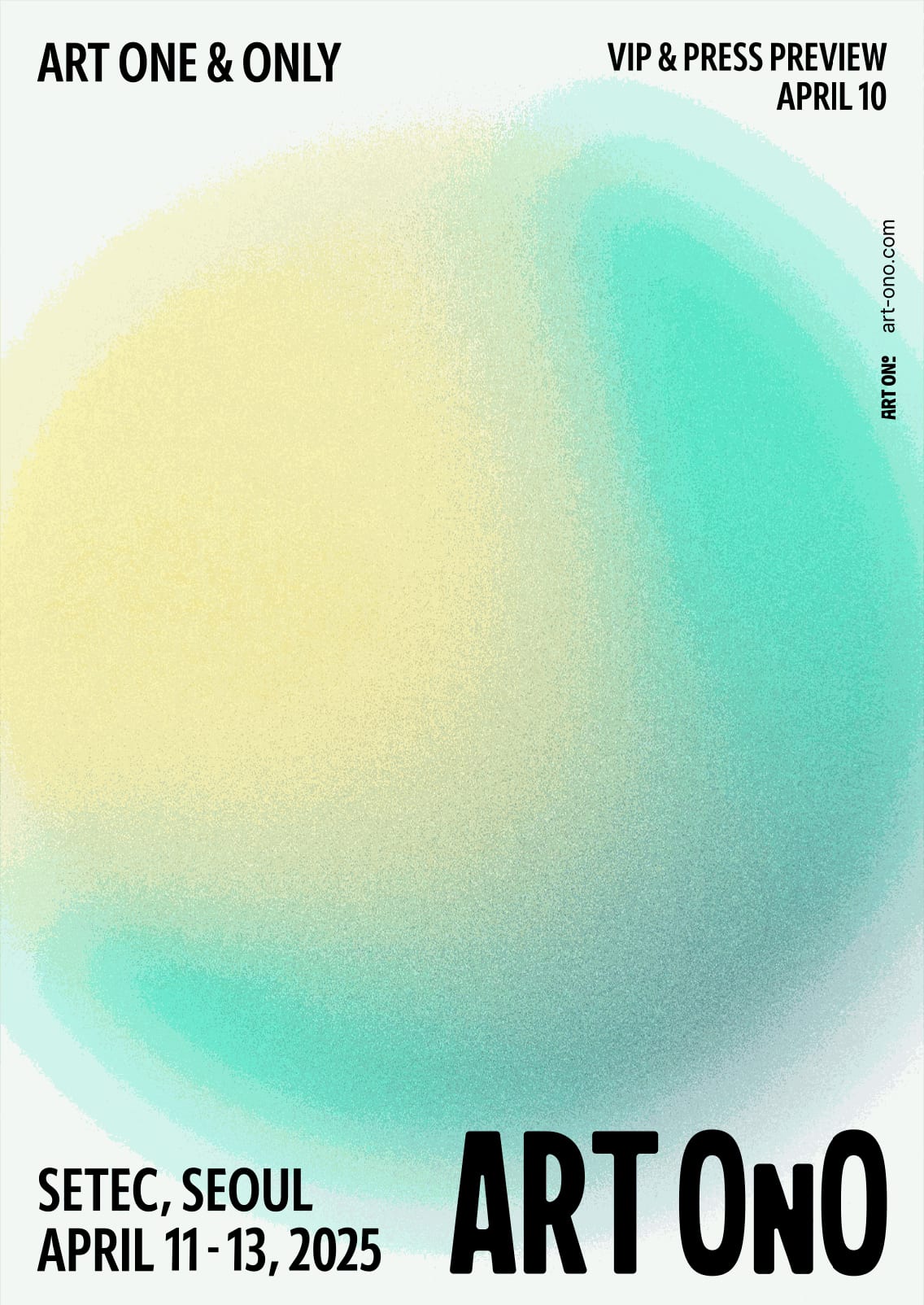Tim Wright English
Tim Wright was born and grew up in London, where he continues to live and work. In the mid 1980s he graduated in Fine Art from Middlesex University. His early paintings displayed an interest in the figure and explored its fragmentation through a vigorous painting process. The body, the observed world and their expression through paint continue to assert themselves. His practice has developed along two strands : the portrait and figure painting. Although one informs the other, they are separate and discreet. The portraits are concerned with capturing likeness and expressing personality. The figure painting allows for the exploration of other, broader themes.
The paintings make oblique reference to the disturbing worlds of Carroll's "Through the Looking-Glass", Tarkovsky's "Solaris" and Turner's late-period sea-pieces.
-
 Feet First , 2023Oil on canvas55 x 45 cm
Feet First , 2023Oil on canvas55 x 45 cm
21.7 x 17.7 in -
 Hare 1, 2023Oil on canvas70 x 60 cm
Hare 1, 2023Oil on canvas70 x 60 cm
27.6 x 23.6 in -
 Lookout, 2023Oil on canvas55 x 45 cm
Lookout, 2023Oil on canvas55 x 45 cm
21.7 x 17.7 in -
 Not Far Away, 2023Oil on canvas120 x 120 cm
Not Far Away, 2023Oil on canvas120 x 120 cm
47.2 x 47.2 in -
 Princess, 2023Chalk, watercolour and pencil on paper65 x 46 cm
Princess, 2023Chalk, watercolour and pencil on paper65 x 46 cm
25.6 x 18.1 in -
 Shepherdess, 2023Oil on canvas55 x 45 cm
Shepherdess, 2023Oil on canvas55 x 45 cm
21.7 x 17.7 in -
 Shepherdesses, 2023Chalk, watercolour and pencil on paper65 x 46 cm
Shepherdesses, 2023Chalk, watercolour and pencil on paper65 x 46 cm
25.6 x 18.1 in -
 Swimmer, 2023Oil on canvas55 x 45 cm
Swimmer, 2023Oil on canvas55 x 45 cm
21.7 x 17.7 in -
 The Drop, 2023Chalk, watercolours and pencil on paper65 x 46 cm
The Drop, 2023Chalk, watercolours and pencil on paper65 x 46 cm
25.6 x 18.1 in -
 The Leap, 2023Oil on canvas55 x 45 cm
The Leap, 2023Oil on canvas55 x 45 cm
21.7 x 17.7 in -
 Vertigo, 2023Oil on canvas55 x 45 cm
Vertigo, 2023Oil on canvas55 x 45 cm
21.7 x 17.7 in -
 Watcher, 2023Chalk, watercolour and pencil on paper65 x 46 cm
Watcher, 2023Chalk, watercolour and pencil on paper65 x 46 cm
25.6 x 18.1 in -
 Witnesses, 2023Chalk, watercolour and pencil on paper65 x 46 cm
Witnesses, 2023Chalk, watercolour and pencil on paper65 x 46 cm
25.6 x 18.1 in -
 A Memorial, 2022Oil on canvas100 x 75 cm
A Memorial, 2022Oil on canvas100 x 75 cm
39.4 x 29.5 in -
 Blue Rose, 2022Oil on canvas90 x 60 cm
Blue Rose, 2022Oil on canvas90 x 60 cm
35.4 x 23.6 in -
 Four Blooms, 2022Oil on canvas90 x 60 cm
Four Blooms, 2022Oil on canvas90 x 60 cm
35.4 x 23.6 in -
 Hare Head Here, 2022Oil on canvas90 x 60 cm
Hare Head Here, 2022Oil on canvas90 x 60 cm
35.4 x 23.6 in -
 Here Hangs a Hare, 2022Oil on canvas100 x 75 cm
Here Hangs a Hare, 2022Oil on canvas100 x 75 cm
39.4 x 29.5 in -
 I Saw the Light, 2022Oil on canvas70 x 60 cm
I Saw the Light, 2022Oil on canvas70 x 60 cm
27.6 x 23.6 in -
 Misty, 2022Oil on canvas70 x 60 cm
Misty, 2022Oil on canvas70 x 60 cm
27.6 x 23.6 in -
 Something Wicked..., 2022Oil on canvas70 x 60 cm
Something Wicked..., 2022Oil on canvas70 x 60 cm
27.6 x 23.6 in -
 Fairytale, 2021Oil on canvas90 x 120 cm
Fairytale, 2021Oil on canvas90 x 120 cm
35.4 x 47 in -
 Trophy, 2019Oil on canvas70 x 60 cm
Trophy, 2019Oil on canvas70 x 60 cm
27.5 x 23.6 in -
 Rosalind Thinks it Over, 2017Oil on canvas90 x 120 cm
Rosalind Thinks it Over, 2017Oil on canvas90 x 120 cm
35 x 47 in -
 TS 3, 2014Oil on canvas90 x 60 cm
TS 3, 2014Oil on canvas90 x 60 cm
35 x 24 in -
 TS 4, 2014Oil on canvas90 x 60 cm
TS 4, 2014Oil on canvas90 x 60 cm
35 x 24 in
Send me more information on Tim Wright
-

Tim Wright
Featured Works | Cast 18 Nov - 23 Dec 2023Tim Wright ’s ‘Cast’ introduces a sequence of male and female characters. Engaged in various levels of activity from the contemplative to the vigorous, they operate as emblematic types drawn...Read more -

Through the Mind’s Eye: an Anthology
9 Feb - 26 Mar 2023Massimo Giannoni is a painter of books and, in particular, a multitude of books that are housed in specific libraries, stores and collections. These are painted in a colourful, representational...Read more -

Pontone & Albemarle Group Show
4 - 26 Feb 2022Acclaimed Scottish painter, Iain Faulkner , continues his enquiry into the expressive potential of the solitary male figure. Whether located in a luxurious international hotel room or the rugged landscape...Read more
